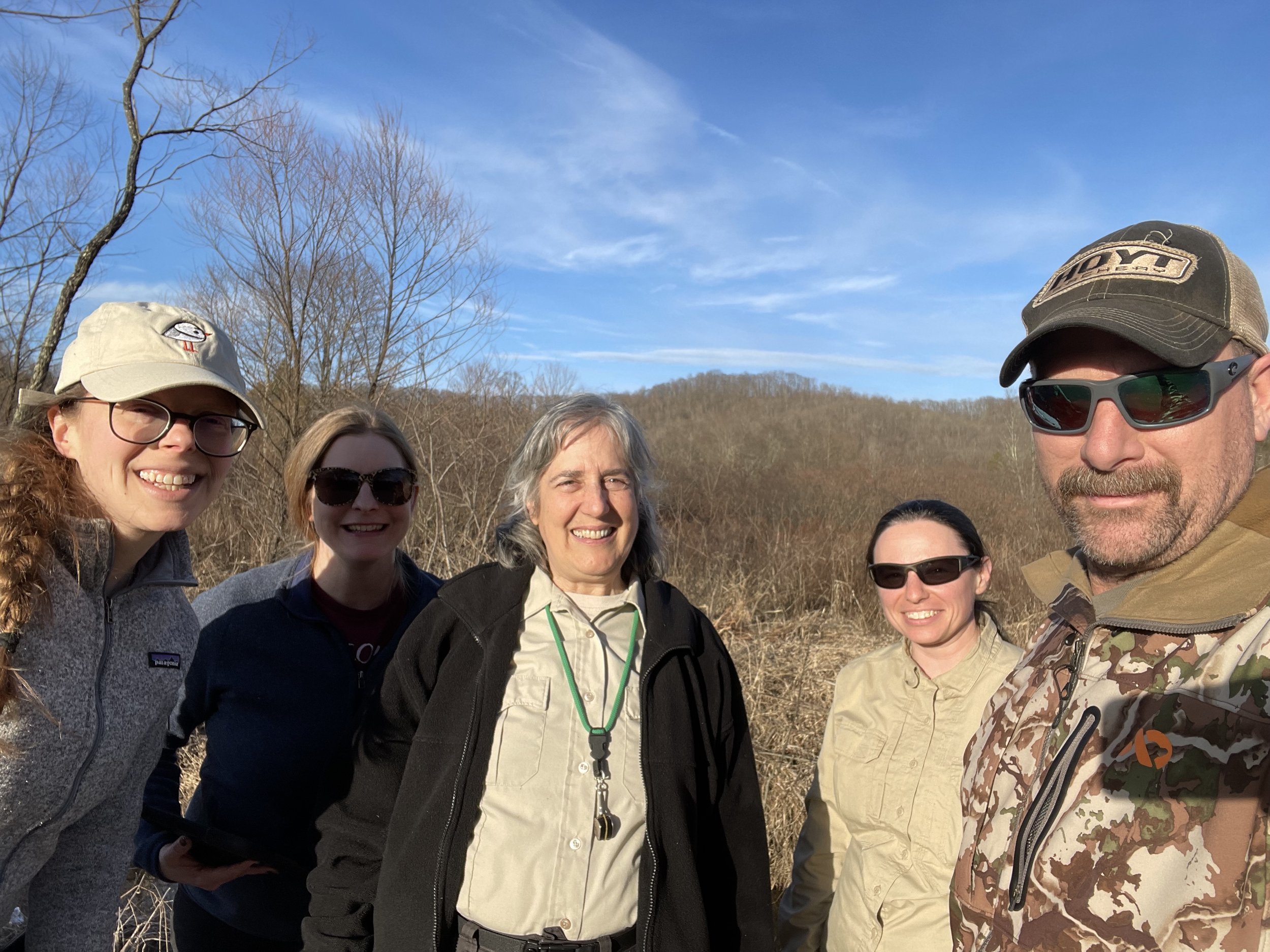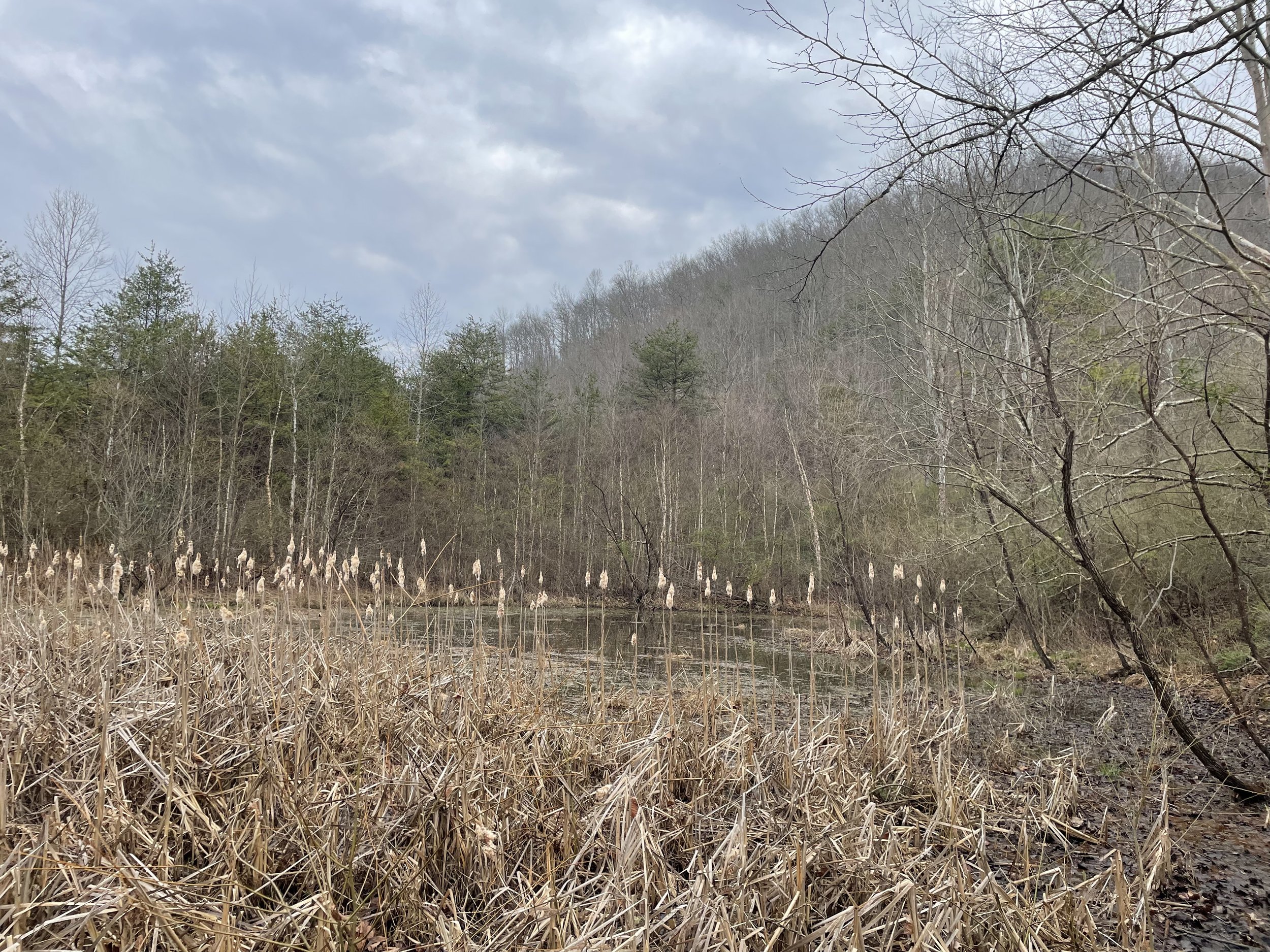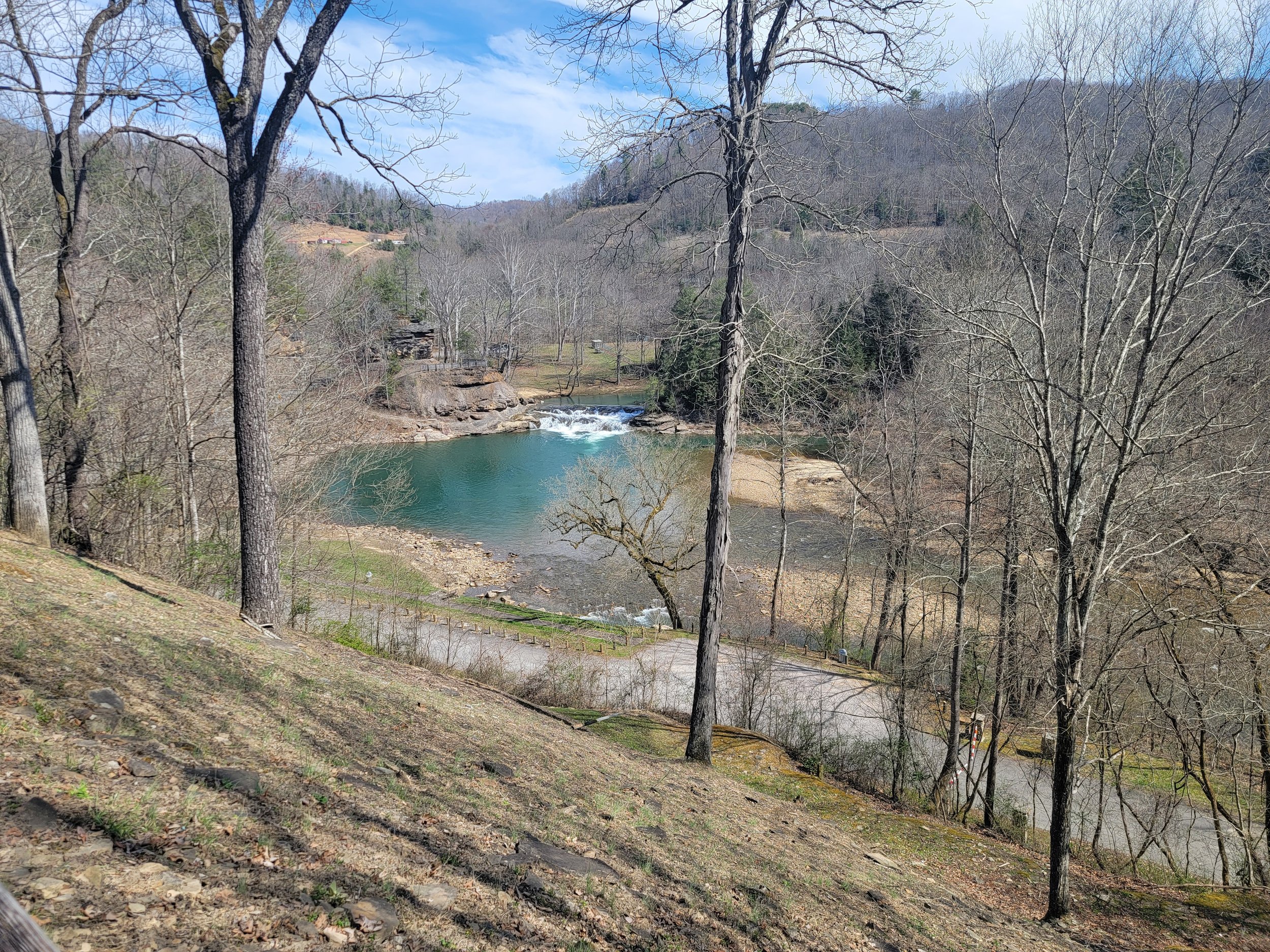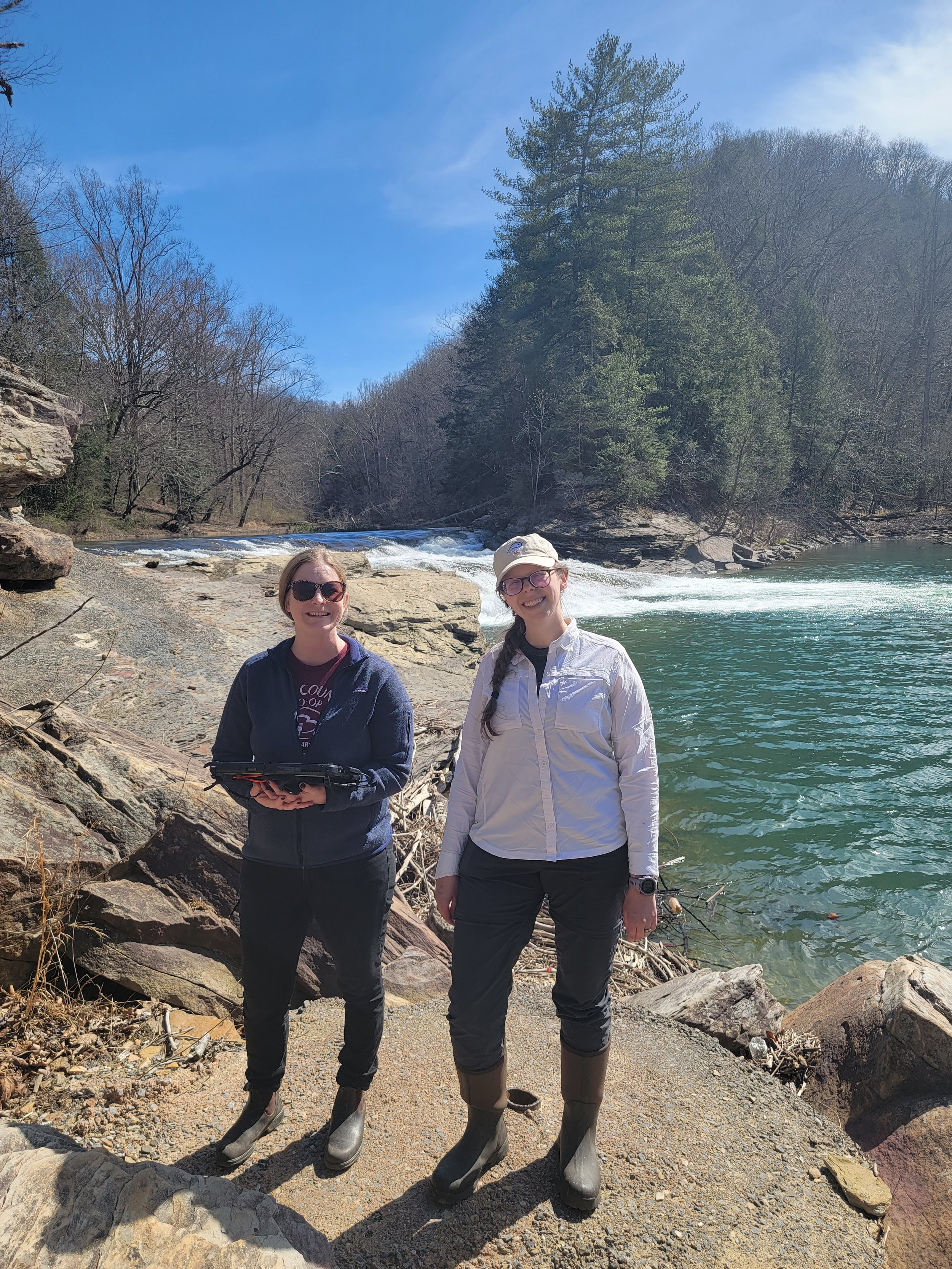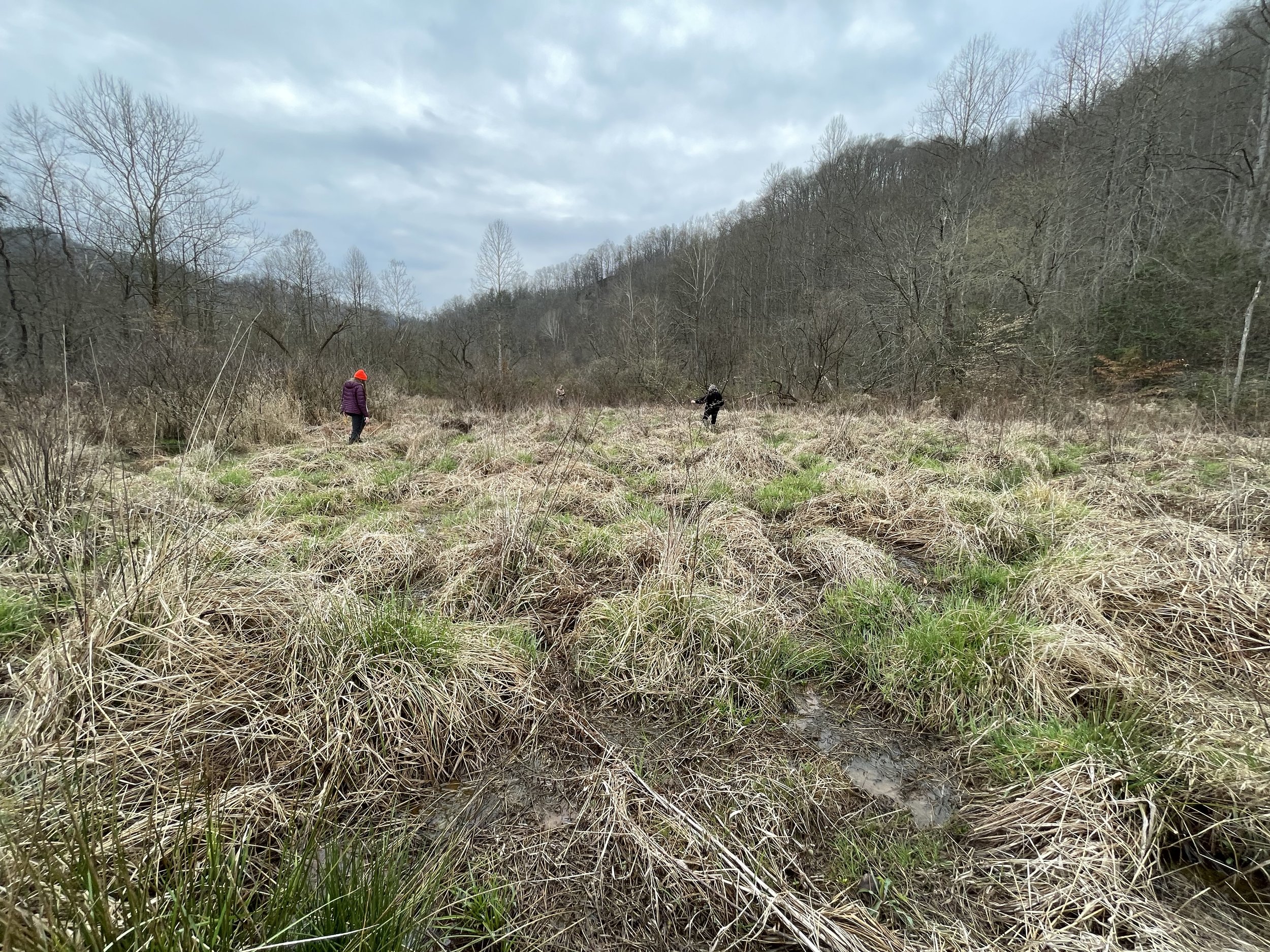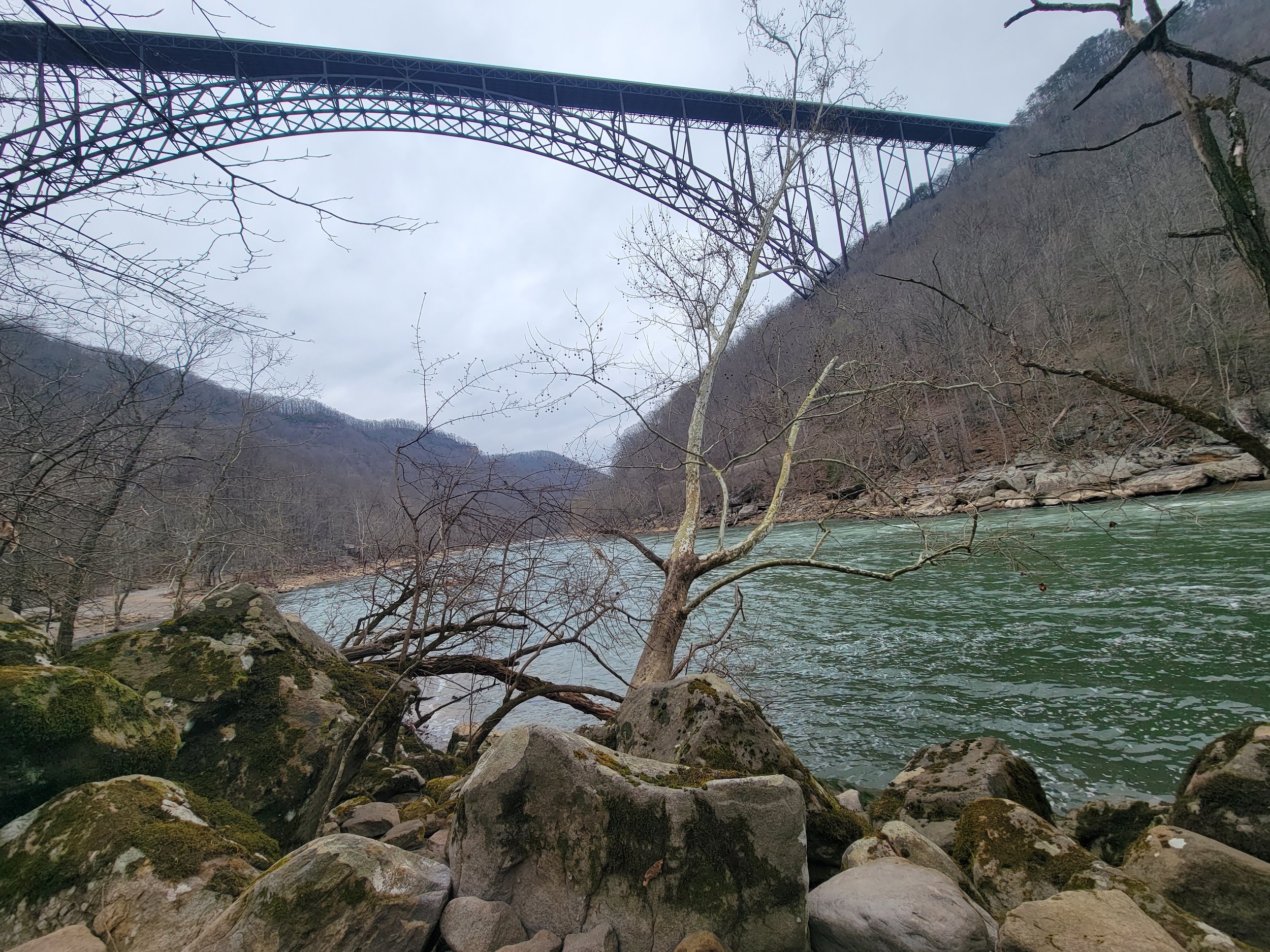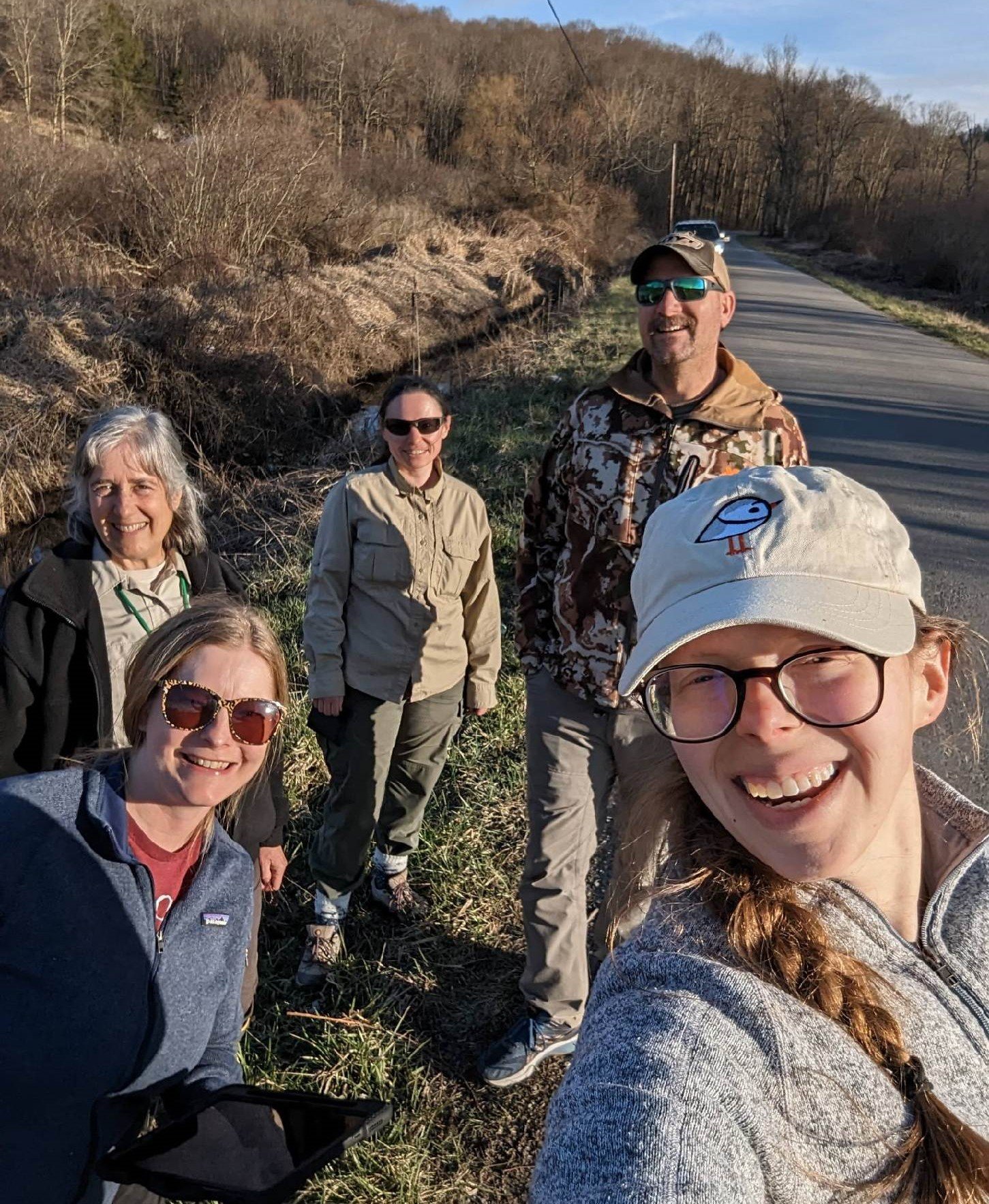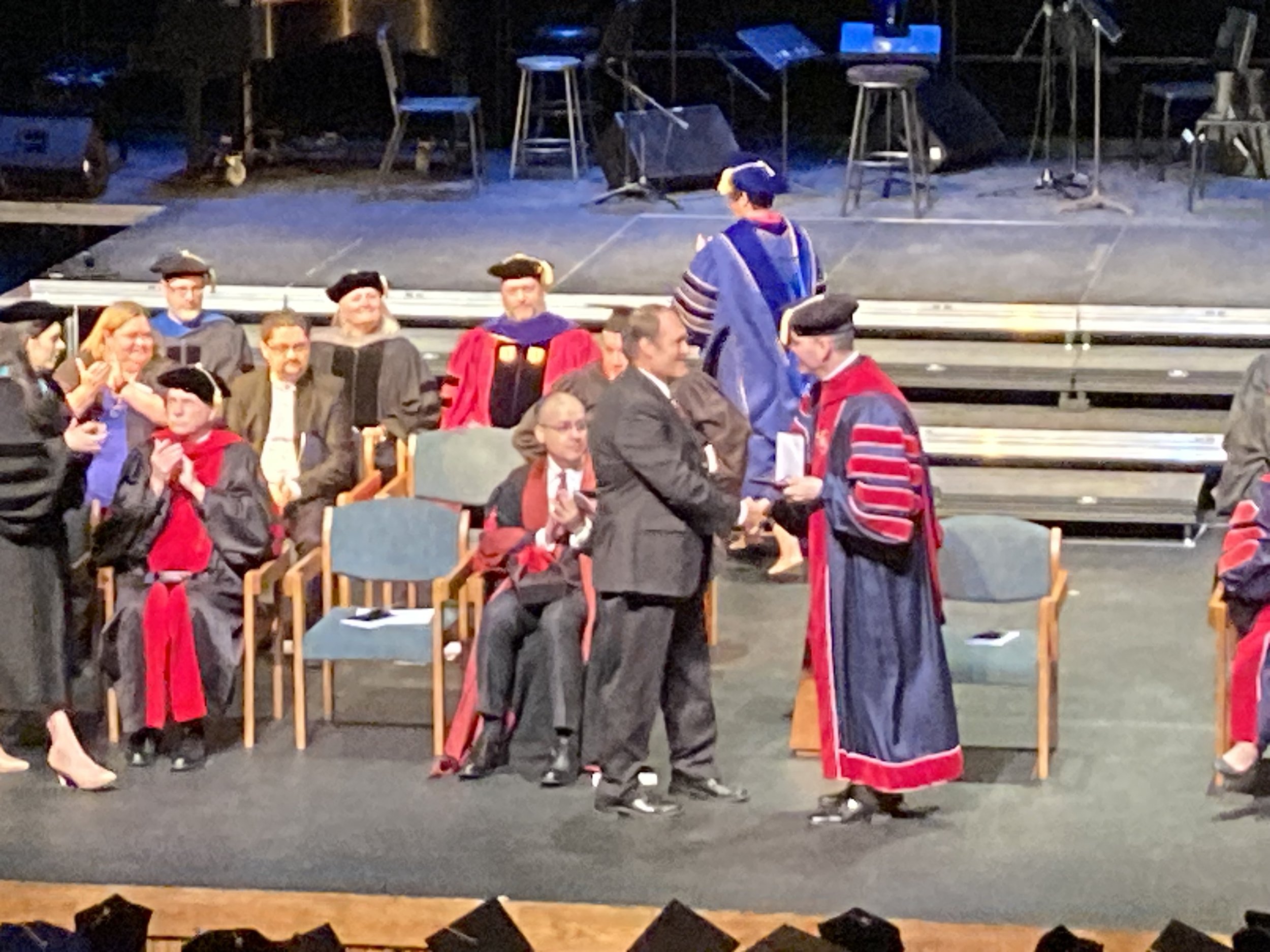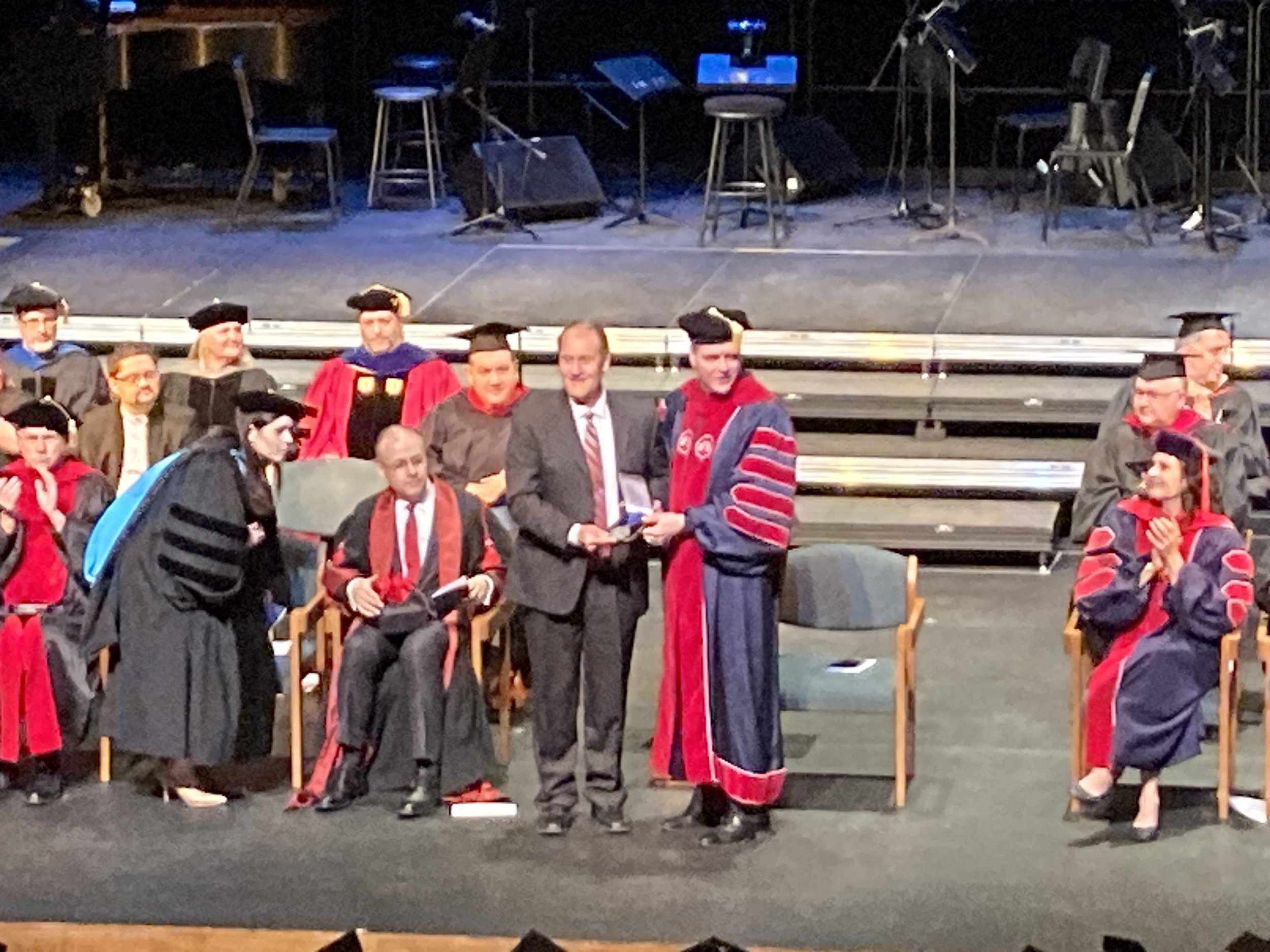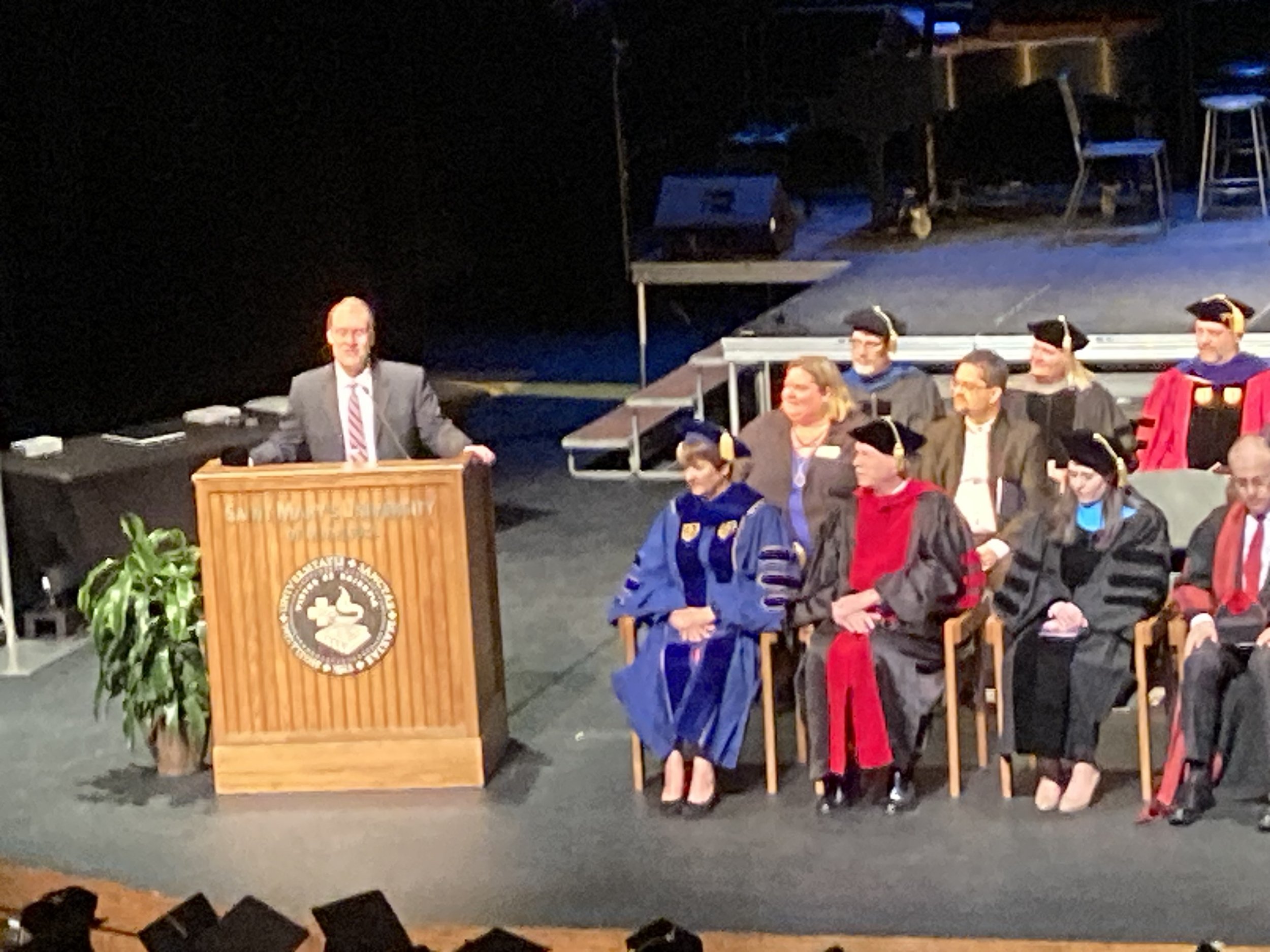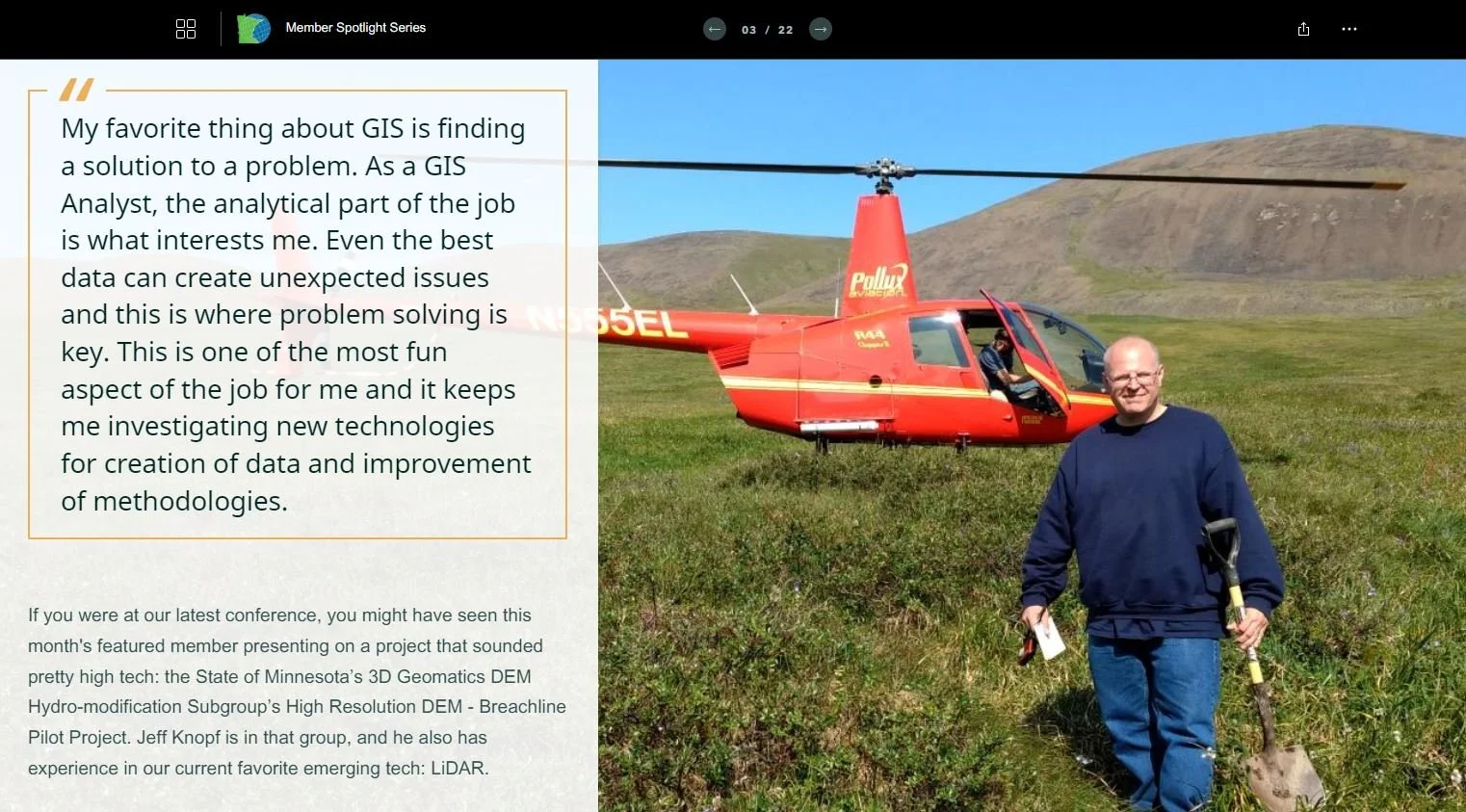
NEWS
Spring Travel to West Virginia
From March 20-24, Kevin Stark and Katie Engelmann traveled to West Virginia for a wetland field verification trip with staff from the state’s Department of Environmental Protection. Wetland mapping in all but eight counties within the state has not been updated in 40-55 years. These updates are needed to assist state agencies and the public in understanding, monitoring, and regulating the state’s aquatic resources. GSS staff and student interns started digitally mapping wetlands in 2022 and will wrap up the project later this year. The trip focused in the southwest area of West Virginia, on the edges of the Appalachian Mountains with its many valleys and winding rivers. It included a stop at one of the country’s newest National Parks at New River Gorge, which was “upgraded” from its National River designation in December 2020. During the week, Kevin and Katie also met with the U.S. Fish and Wildlife Service’s National Wetland Inventory (NWI) coordinator for the Northeast region.
GSS Director Receives University Award
Andy Robertson, Executive Director of GeoSpatial Services, was honored today with the University’s Distinguished Lasallian Educator Award. This annual award recognizes a member of the faculty, staff, or administration for their contributions and commitment to the Lasallian mission of education. Andy has led the expansion of GSS to uniquely engage Saint Mary’s students in serving the needs of federal agencies, tribal nations, and nonprofit organizations in the areas of land management and water conservation. Similar to Saint John Baptist de La Salle’s first schools in 17th century France, GSS engages education to respond to community needs at this particular time in history. The award was presented at the University’s Founder’s Day Convocation. Congratulations, Andy!
GSS Staff Attend Esri Regional Conference
Last week, Kevin Stark and James Loken attended the Esri Midwest User Conference (UC) in Chicago, an opportunity to network and learn how people are leveraging GIS to solve problems, create shared understanding, and map common ground. They attended sessions on ArcGIS Enterprise, Workflow Manager, ArcGIS Insights, Web AppBuilder, ArcGIS Arcade, and more. The best sessions were on new features in the Survey123 app (improved image markup, point streaming, creating/publishing with Connect) and ArcGIS Pro Tips and Tricks, which focused on boosting productivity and efficiency when working in Pro (mapping, data and content management, analysis, and sharing). The GSS team is excited to incorporate the new ideas and techniques learned at the Midwest UC into everyday workflows and fieldwork!






GSS Staff Member Featured in Consortium Spotlight
GIS Analyst Jeff Knopf was recently featured in the “Member Spotlight” of the Minnesota GIS/LIS Consortium, an organization that strives to develop and support GIS professionals in Minnesota for the benefit of the state and its citizens. Jeff is a long-time member of the Consortium and first presented at their annual conference nearly 20 years ago! You can read the full spotlight here.
GSS Develops Courses for New Minor
GeoSpatial Services has partnered with the SMUMN Biology Department to develop new coursework as part of the Natural Resources Management Minor. The Wetland Ecology and Management course kicked off in fall, instructed by GSS staff, Katie Engelmann, PWS. The class explores dimensions of wetland science including hydrology, biological adaptations, plant identification, management, and policy. Students visited a number of regional wetlands and gained valuable technical skills such as wetland delineation, hydric soils identification, and wetland quality assessments.








Bollig Presents at Research Symposium
Last week, GSS Analyst (and SMUMN alum) Madalyn Bollig presented at the Missouri River Institute Research Symposium, hosted by the Missouri River Institute and the University of South Dakota in Vermillion, South Dakota. Madalyn shared her Masters thesis research on the Ecological Changes of the Lower Niobrara River Valley and Lewis and Clark Lake Delta, from Past to Present. Her research had special emphasis on using GIS, remote sensing and field methods to analyze the riparian ecosystem changes in response to sedimentation fluctuations due to flooding events on the Niobrara (NE) and Missouri Rivers. While at the symposium, Madalyn also had the opportunity to present a poster on our work at GSS and to network/market on our behalf. Many of our partner agencies were in attendance, such as the National Park Service, U.S. Fish and Wildlife Service, the Army Corps of Engineers, and the U.S. Geological Survey, as well as students. It was a day packed full of research, ecosystem, and wildlife updates on the longest river in the U.S.
Knopf Presents Project Findings at the Minnesota GIS/LIS Conference
In mid-October, Jeff Knopf presented at Minnesota’s GIS/LIS Conference in Bemidji. Jeff spoke about his involvement in a pilot project with the State of Minnesota’s 3D Geomatics DEM Hydro-modification Subgroup to investigate the value of legacy breachlines and newly acquired high resolution digital elevation model (DEM) data for usefulness in hydro-modification. Considerable money has been spent on the creation of the legacy breachlines and, with the acquisition of new DEMs for the State of Minnesota, many stakeholders are concerned as to whether money spent on breachlines required for hydro-modification was lost. Hydro-modification is a necessary step to prepare elevation models for analysis, such as, identification of where to place best management practices, flood analysis, measurement of nitrogen and phosphorus transport, to name a few. The pilot project found that the legacy breachlines are an essential dataset for hydrologic modeling and terrain analysis.
GSS in Final Stages of New Mexico Wetland Mapping Projects
Areas with a green outline were completed in September; areas outlined in blue are next to be finalized.
GeoSpatial Services has been working with the New Mexico Environment Department (NMED) for over a decade to map the state’s wetlands and assess wetland functions. At the end of September, GSS completed and submitted three more study areas, leaving only three study areas to finalize in the state. As the project wraps up, GSS is working with NMED to create an online story map that will share what we’ve learned with the public. The website will describe the importance of wetlands, the types found in Mexico, and the valuable functions they perform, such as groundwater recharge, surface water detention, and wildlife habitat provision. In September, GSS Director Andy Robertson travelled to New Mexico to collect photos for use in the story map. He criss-crossed the state, visiting the Apache and Cibola National Forests, the San Juan River and Rio Grande, and the mountains surrounding Santa Fe. The Valles Caldera National Preserve in north central New Mexico was a particular highlight, thanks to recent rainfall, late-blooming wildflowers, and elk.




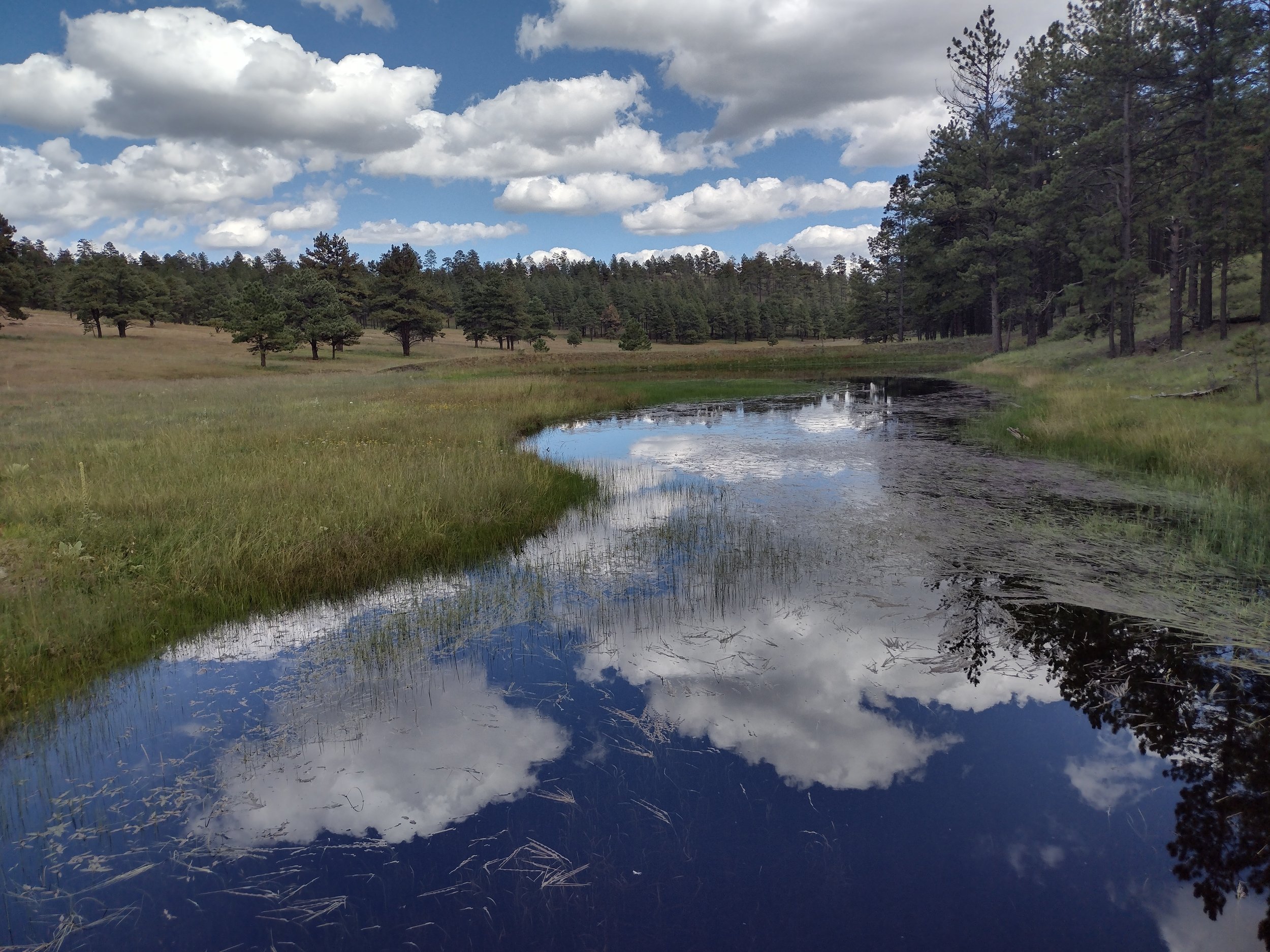







BLM Alaska Fieldwork - Summer 2022 Edition
This summer saw a continuation of the ongoing work GeoSpatial Services (GSS) is doing in Alaska for the Bureau of Land Management (BLM). GSS has had wetland mapping contracts with the BLM for 4 years now. Each of its awarded contracts includes a field component for verifying its computer-based GIS work. Fieldwork is done on each project to compare the wetland data created in the office to actual landscapes, and not solely relying on the satellite imagery used in the work.
This summer’s BLM work was similar to past years in that a team was sent to Alaska to complete data collection and data comparisons utilizing helicopters, cameras, soil and vegetation sampling, and more. This year’s team was led by Eric Lindquist and James Loken, who spent 20 days in the vast landscapes of Alaska. The pair traveled many miles by car, plane and helicopter. Lindquist and Loken traveled from Fairbanks, AK to remote villages/towns such as Bettles, Galena, Nome and more. Areas of unique interest included the Seward Peninsula and the Bering Land Bridge, Kobuk/Noatak National Park, Kobuk Sand Dunes, and more. This work will continue for nearly two more years and will employ numerous staff and students!
Robertson presents at Tribal Conference
During the last week of August, GSS Director Andy Robertson attended and presented at the National Tribal and Indigenous Climate Conference (NTICC) in St. Paul. This biennial conference convenes “knowledge holders on climate change and resilience efforts with an emphasis on the intersection, inclusion and honoring of Traditional and Indigenous Knowledges”. Robertson’s presentation was titled “Working with Tribal Communities to Build Wetland Program Capacity and Advance Tribal Wetland and Water Quality Assessment Programs”. It covered an ongoing collaboration between GSS and the Mandan, Hidatsa, and Arikara Nation (also known as the Three Affiliated Tribes, or TAT) of the Fort Berthold Reservation in North Dakota. GSS has been working with TAT to update wetland mapping for the reservation (see map below), identify potentially restorable wetlands, conduct a wetland functional assessment, and complete a wetland program plan. In addition to TAT, GSS has also worked on wetland projects with the Stockbridge-Munsee Band, the Shakopee Mdewakanton Sioux Community, and the White Mountain Apache.
GSS is currently partnering with the National Association of Wetland Managers (NAWM) on two EPA grants to provide training for tribal community staff on wetland programs and Clean Water Act programs. Over the next 6 years, NAWM and GSS will be offering webinars and in-person workshops, as well as developing web-based resources, to help build tribal program capacity.
